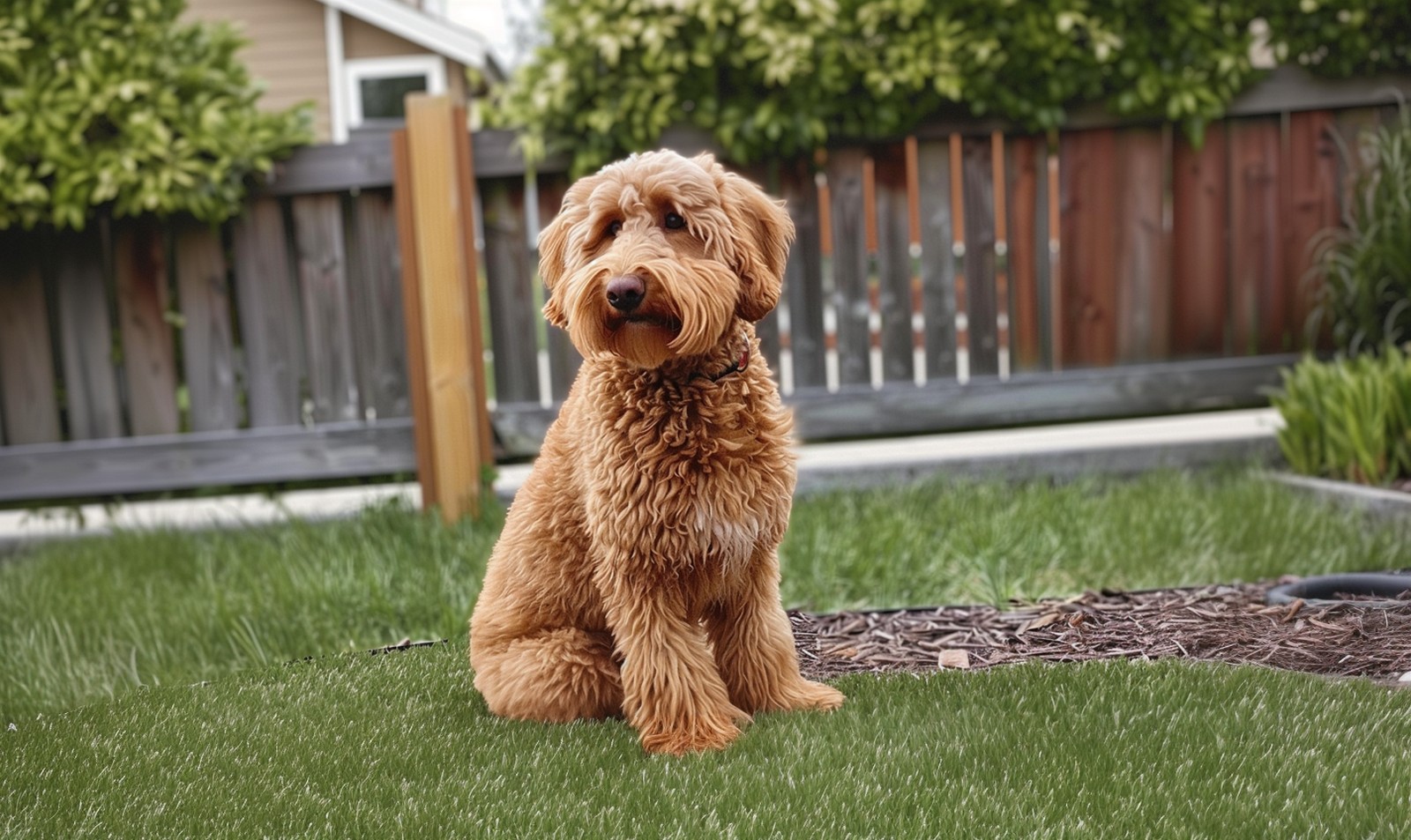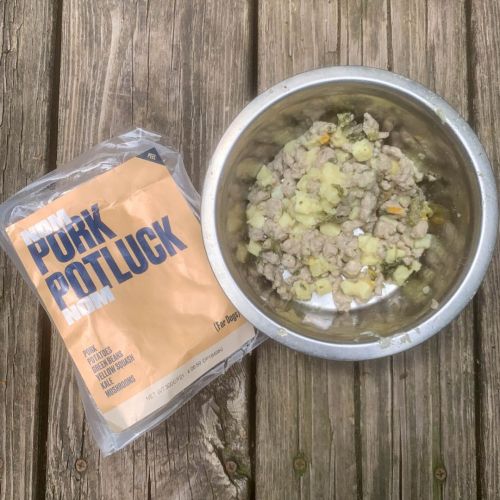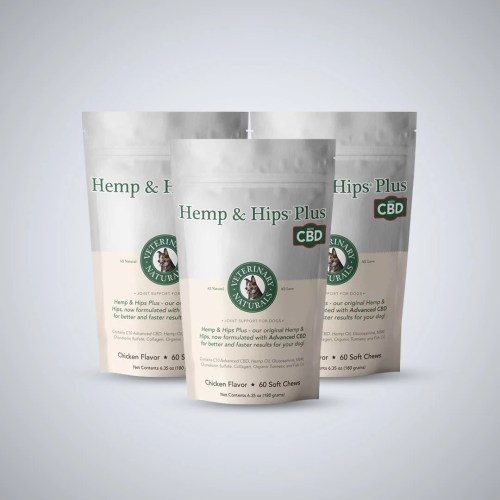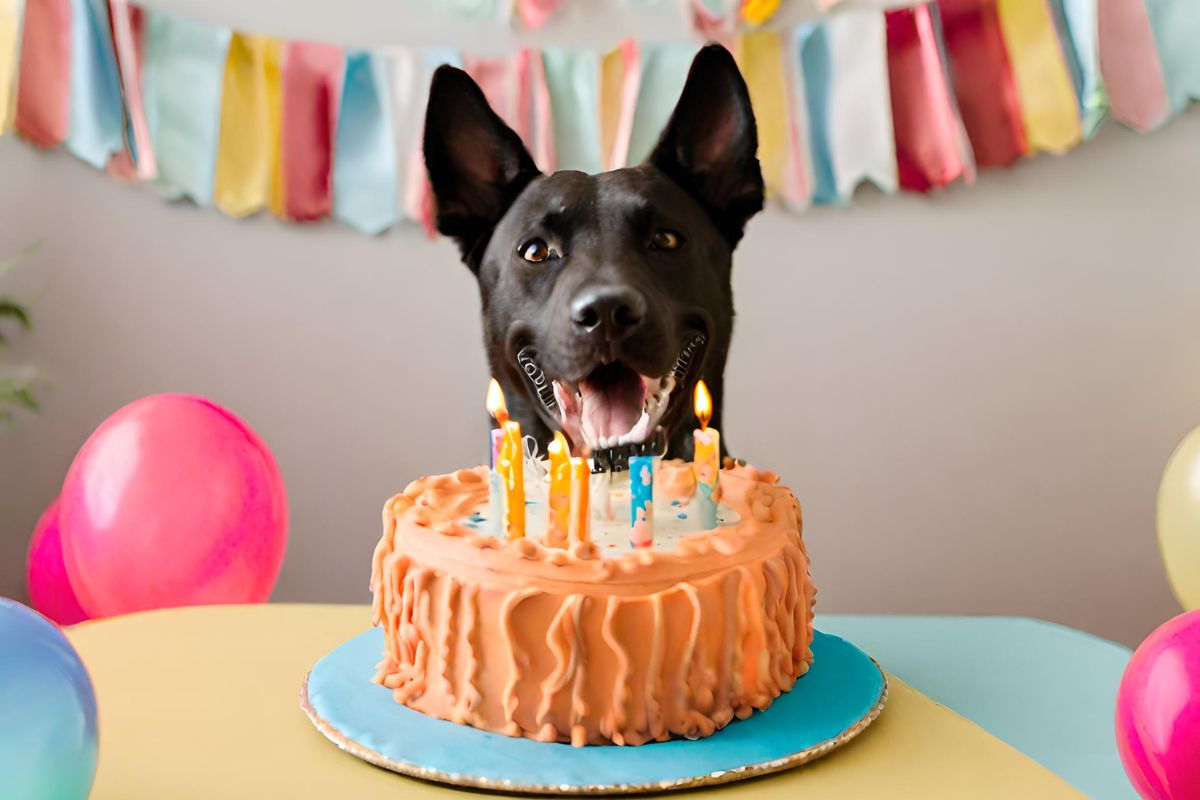
This post may include affiliate links. If you purchase anything through these links, DogVills may earn a commission at no extra cost to you.
The Double Doodle is a glorious crossbreed containing a mixture of two Doodle mixes; the Labradoodle (Labrador-Poodle mix) and Goldendoodle (Golden Retriever-Poodle mix). They have the classic gorgeous curls of the Poodle with the lovely loyal, playful traits of the Labrador and Golden Retriever. If you’re thinking about getting one, keep reading for all of the key facts you need to know!

Just a head’s up, this post contains affiliate links where we recommend products. We earn a commission at no extra cost to you if you buy anything through these links.
Double Doodle fast facts
| Average Weight | Toy: up to 10-25 lbs (4.5-11kg), Mini: 25-24 lbs (11-20 kg), Standard: 50-100 lbs (23-45 kgs) |
| Average Height | Toy: up to 14 inches (36 cm), Mini: 14-20 inches (36-51 cm), Standard 20-29 inches (51-74 cm) |
| Hypoallergenic? | Often but not always |
| Coat | Thick, medium-long, curly double coat |
| Shedding | Low-moderate shedding |
| Grooming | High maintenance |
| Barking | Not especially vocal |
| Good with kids? | Yes |
| Good with cats? | Yes with socialization |
| Good with other dogs? | Yes |
| Tolerates being alone | For short periods |
| Tolerates apartment life | Smaller variations yes |
| Training | Highly trainable |
| People pleaser? | Yes |
| Exercise Needs | 40-60 minutes per day |
| Health Concerns | Heart problems, eye problems, hip and elbow dysplasia, allergies. |
| Life Span | 10 – 15 years |
| Average cost | $1500-$3000+ |
History & Origin of the Double Doodle
Most mixed breeds are too new to have a history – let alone a double mixed breed! They are a very recent American creation, combining two crossbreeds for the ultimate designer dog! Let’s explore the history of its parent breeds and crossbreeds to better understand them.
Labradoodle
The Labradoodle was created in Australia in the 1980s by dog breeder Wally Conron. His goal was to develop an assistance dog with a hypoallergenic coat for disabled people with allergies.
Goldendoodle
The first Goldendoodle is believed to have been bred by author and great-granddaughter of Charles Dickens, Monica Dickens, in 1969 in England. However, it wasn’t until the 1990s that breeders began intentionally breeding Goldendoodles, due to the success and popularity of the Labradoodle in the decade prior.
Labrador
The Labrador’s roots lie in the island of Newfoundland, Canada, where they were initially known as Lesser Newfoundlands. They were originally bred by fishermen and settlers in the early 19th century from the ancient St John’s water dog to assist with retrieving fishing nets and hauling loads. Their name comes from the Labrador Sea, the region where they come from.
Labradors arrived in the USA in the early 20th century and were officially recognized by the American Kennel Club in 1917. They consistently rank as the most popular dog breed in the United States, the United Kingdom, and across the Western world, both as beloved pets and seeing-eye dogs for the visually impaired.

Golden Retriever
The Golden Retriever has a rich history dating back to the mid-19th century in Scotland. They were initially developed by crossing the now-extinct Yellow Retriever with the Tweed Water Spaniel and the Bloodhound. They were refined over several generations to become the ultimate family dogs that we know today.
Golden Retrievers gained popularity in the United States during the early 20th century, being recognized by the AKC in 1925, and have since become one of the most beloved and popular dog breeds worldwide.

Poodle
Originally, Poodles were bred to be water-hunting dogs, but thanks to their unique beauty, you can spot them in modern fashion photography and European art dating back to the 15th century. They were first bred in Germany, with their name being a straight-up translation of the German word “Pudel,” which means “to splash water.” These guys have family ties to various European water dogs and are kin to other modern European water breeds.
There are three Poodle sizes: Toy, Miniature, and Standard. The American Kennel Club gave them the nod of approval back in 1887, and they’re still one of the world’s most popular dog breeds today, ranking second highest in canine intelligence and getting mixed with tens of other breeds because of their gorgeous hypoallergenic curls.

Physical characteristics of the Double Doodle
All about the physical traits of the crossbreed.
Size & weight
The size of a Double Doodle depends on the size of the Poodle used to breed them. Standard Double Doodles typically stand between 21 to 29 inches (53 to 74 cm) tall and weigh around 50 to 100 pounds (23 to 45 kg).
Miniature Double Doodles measure approximately 17 to 21 inches (43 to 53 cm) in height and weigh between 35 to 60 pounds (16 to 27 kg). Toy Double Doodles are the smallest, with a height of about 14 to 17 inches (36 to 43 cm) and a weight ranging from 25 to 45 pounds (11 to 20 kg).
Breeding & puppyhood
Breeding Double Doodles doesn’t come with any significant issues, they are not prone to dystocia or difficult birth, but we always recommend full veterinary support, help, and advice throughout the breeding of puppies, whatever the breed.
Litter sizes for Double Doodles can vary depending on the size of the parent dogs, but they often range from 6 to 10 puppies per litter. In terms of development, they typically reach their adult size by around 12 to 18 months of age. Sexual maturity is usually attained between 6 to 12 months, while mental maturity can continue to develop up to 2 years or more.
Appearance
Double Doodles have curly coats that come in several colors. They have broad faces and floppy ears, expressive, almond-shaped eyes, and a sturdy, well-proportioned body with long legs and tails.

Color
The coat colors of Double Doodles are extremely diverse due to their parent breeds. However, cream, gold, apricot, chocolate, black, and parti-color are among the most common colors in the crossbreed. They can also have spots, patches, or other patterns, depending on their genetic heritage.
Coat-type
Double Doodles typically have a thick, dense, soft single coat with no undercoat that can be medium to long and wavy or curly. They’re typically low shedders and require a lot of grooming to maintain good condition.
Are Double Doodles hypoallergenic?
Most Doodle breeds are hypoallergenic, but due to the varied mixture of genetics, whether or not a Double Doodle will be hypoallergenic depends on how dominant their Poodle genes are.
Double Doodle personality
Double Doodles have a delightful blend of personality traits. They are known for their friendly and social nature and they are typically affectionate, eager to please, and thrive on human interaction. Their intelligence makes them quick learners, and they often excel in obedience training and learning new tricks.
Double Doodles are usually playful and active without being hyperactive. They enjoy outdoor activities, games, and exercise, making them great partners for active families. Their friendly disposition extends to children, other dogs, and even strangers.
Additionally, their loyalty and protective instincts make them excellent watchdogs, as they can be attentive to their family’s well-being without displaying aggression or excessive territorial behavior. Overall, Double Doodles tend to be affectionate, sociable, and well-rounded companions.

Are Double Doodles good family dogs?
Double Doodles are the ideal family dogs. They are super friendly and loving towards their families, and patient with little children. Their intelligence and trainability also contribute to their suitability as family pets, as they can adapt well to various household dynamics and lifestyles.
Are Double Doodles good with other dogs?
Yes, Double Doodles are typically good with other dogs. They tend to be sociable and friendly, which can help them get along well with other canine companions. However, as with any dog, proper socialization and supervision are essential to ensure positive interactions with other dogs.
Are Double Doodles protective?
Double Doodles, like all dogs, are very protective of their homes and loved ones, While they may be alert to potential threats, they remain friendly and non-aggressive unless absolutely necessary for self-defense or the protection of their loved ones.
Are Double Doodles aggressive?
Double Doodles are not typically aggressive dogs. However, individual behavior can vary, and early socialization and training are essential to ensure a well-behaved and non-aggressive Double Doodle.
Are Double Doodles easy to train?
Training Double Doodles is a breeze thanks to their smarts and desire to please. Use that fun-loving streak to your advantage with lots of positive reinforcement, and keep training sessions short to keep boredom at bay.
Begin with the basics and never punish your pup for bad behavior, but rather redirect and correct them. Ideally, you’ll kick off your puppy’s training around 12 weeks old and aim for 5-15 minute sessions once or twice a week. Remain consistent and be patient with your pup as they learn!

Do Double Doodles get separation anxiety?
Separation anxiety is very distressing for dogs and can cause destructive behaviors like howling and going potty indoors, so it’s important to make sure your pup is well looked after. Any dog can get separation anxiety, but Double Doodles they are at a higher risk because they’re such social and intelligent dogs.
Pent-up energy from not getting enough exercise, boredom from lack of play, and loneliness from spending too much time alone can all increase the likelihood of separation anxiety in dogs. So, to reduce the risk, make sure your pup’s needs are met and practice separation training early on.
You can do this by building their independence gradually through alone time and creating positive associations and rewards. Stay calm and avoid reacting negatively to any destructive behaviors. You can also try out some anti-anxiety products to aid your training.
Do Double Doodles get bored easily?
Double Doodles are bright and active dogs thanks to their parent breeds, so they can get bored a little bit more easily than some other dogs. Over time, chronic boredom can lead to destructive behaviors. They need mentally stimulating play through challenging games like hide and seek and interactive toys like treat dispensers, puzzles, and snuffle mats, as well as plenty of company and fun walks to keep boredom at bay.
Do Double Doodles drool a lot?
Double Doodles aren’t known to be heavy droolers, but any dog can drool when they’re around something that smells delicious!
Are Double Doodles noisy?
Double Doodles are not known to be noisy dogs. They may bark and growl to communicate or alert their owners to something, but they aren’t known for being excessively loud.
A brief look at the basic needs of Double Doodle for budding owners.
Diet
Ensure your dog’s well-being with a balanced diet, focusing on nutritionally complete dog food packed with essential vitamins, minerals, healthy fats, carbs, and lean proteins. Opt for quality kibbles or wet dog foods made from real ingredients, avoiding cheap fillers and chemicals.
Choose dog food tailored to your dog’s size and life stage, as their nutritional needs vary, and larger breeds may require extra protein and omegas for strong bones and muscles.
We recommend: Nom Nom Fresh Dog Food
How much should a Double Doodle eat?
Standard Double Doodles require 2-3 cups of food daily, split into two meals. Miniatures usually need 1 cup, while Toys typically require ½ cup.
For puppies, feed them 20% of their weight per day, divided into 3-4 small meals, and adjust seniors’ calorie intake as they age to reduce pressure on the joints and avoid weight gain.
Exercise
Double Doodles need 40-60 minutes of daily exercise, depending on their size. For Double Doodle puppies, aim for about 5 minutes of exercise per month of age daily, while seniors should reduce activity to protect their joints as they age.
They enjoy walking, running, and swimming, thanks to their water-baby genes. These dogs thrive outdoors and relish camping trips and day trips out. If you can take them to a dog-friendly lake or the beach, they’ll have a blast!
Grooming
Care must be taken to maintain the Double Doodle’s coat. Due to their tendency to tangle and trap dirt, Double Doodles require regular grooming to stay clean and avoid matting, a common concern for Doodle breeds, which can cause discomfort and skin issues.
To maintain their coat, owners need to brush them every 2-3 days using a good slicker brush and bathe them monthly with a natural dog shampoo designed for curly coats. Regular haircuts every couple of months are also necessary to prevent tangles and mats from developing.
You can also consider a grooming kit like the Neakasa Neabot S1 Pro (hint: it’s usually cheaper on their own website versus other retailers, so check there first).
Are Double Doodles healthy?
Double Doodles have an average lifespan of 10-15 years. They are generally healthy dogs, but all breeds and crossbreeds are naturally predisposed to having certain health conditions. When buying a puppy from a breeder, you should ask them for health documentation that covers breed-specific genetic conditions. They are commonly affected by the following things.
Hip & elbow dysplasia
Hip & elbow dysplasia is a prevalent genetic ailment among dogs, resulting in abnormal growth of the joints. It eventually leads to arthritis and requires surgery to correct the joint, but that’s not usually necessary unless severe.
Vets diagnose the condition through a basic physical examination and x-ray. Mild cases can often be managed with lifestyle adjustments, non-surgical therapies, hip & joint supplements, and pain relief medications, and shouldn’t affect the length or quality of a dog’s life.
Symptoms of hip & elbow dysplasia in dogs include:
- Limping or bunny hopping
- Whining or showing signs of pain/discomfort
- Loss of muscle mass around the hips
- Low energy and irritability
- Limited mobility
- Inability to get comfortable
- Licking the affected joints
Hemp & Hips Plus CBD
Best CBD Oil Supplement for Dogs
Vet Naturals Hemp & Hips quickly delivers a CBD richer in joint-supporting cannabinoids and terpenes, easing joint pain and anxiety in as little as 10 minutes. The 100% naturally organic blend is formulated by vets and Made in the USA.
Bloat (Gastric torsion)
Bloat or gastric torsion in dogs is when the stomach fills with gas and it’s significantly more common in large, deep chested breeds like the Standard-sized Double Doodle. It’s caused by the rapid accumulation of gas in the stomach, often by eating too fast.
It is considered a medical emergency because it can twist the gut in a way that cuts off its blood supply, and it requires immediate treatment. It can also make the spleen twist and lose circulation, and block vital veins in the back that carry blood to the heart.
Any dogs suspected of having bloat must be taken to the emergency vet hospital as soon as possible. They will need to have their stomach pumped and receive IV fluid treatment, antibiotics, painkillers, and surgery.
Signs of bloat in dogs include:
- A hard, swollen belly
- Retching
- Drooling
- Abdomen pain
- General distress
Arthritis
Arthritis is a common joint condition characterized by inflammation, pain, and reduced mobility, often caused by wear and tear, aging, or underlying health issues. It’s especially prevalent in big dogs like Standard Double Doodles because their joints have extra weight and pressure on them.
There is no cure but there are several ways to manage it and relieve the symptoms from non-surgical therapies and lifestyle changes to herbal pain remedies and pain medications.
Signs of arthritis in dogs include:
- Limping or favoring one leg
- Stiffness, especially after rest
- Difficulty getting up or lying down
- Reluctance to climb stairs or jump
- Noticeable decrease in activity level
- Swelling or warmth in the affected joints
- Yelping or whimpering when touched in specific areas or making big movements
- Irritability or withdrawal
Dilated Cardiomyopathy (DCM)
Double Doodles can be prone to Dilated Cardiomyopathy, also known as DCM. It is typically a genetic disease and causes weakened contractions and poor pumping ability in the heart, eventually leading to heart failure.
There is currently no cure and usually, it can’t be reversed, but there are ways to manage the symptoms and prolong life after diagnosis. DCM happens in two phases; the occult phase, in which there are no symptoms, and then the overt phase, when clinical signs start to show. Dogs can live anywhere from months to years with the condition.
Signs of DCM in dogs include:
- Low energy
- Fainting or collapsing
- Coughing or gagging
- Trouble breathing
- Reduced appetite
- Inability to exercise
- Weight changes
- Swelling in the stomach
Allergies
Double Doodles are also prone to allergies because of their sensitive Poodle genetics, which can include food, skin, and environmental allergies. Common food allergies in dogs include beef, chicken, dairy, wheat, and soy.
Food allergies can cause:
- Smelliness
- Dull coat
- Lethargy
- Stomach upsets
Topical allergies include harsh chemicals in shampoos and conditioners and can cause:
- Hives
- Hair loss
- Skin irritation
- Itching
- Redness
Common environmental allergies include pollen, dust, and home cleaning products and can cause:
- Red or irritated eyes
- Sneezing
- Coughing
- Runny nose
If you think your dog is allergic to something in their diet, you should talk to your vet about doing an elimination diet to help you find and cut out the cause of their symptoms or switch to hypoallergenic food. Stick to topical products with natural, gentle formulas, and try antihistamine medication for environmental allergies if the cause can’t be eliminated.
Ear infections
Ear infections can be bacterial or fungal, and they are common in floppy-eared breeds like the majority of the Doodle breeds. They can affect both the inner and outer ear and are most often picked up after exposure to water.
Vets can treat ear infections with antibiotics, but they need to be treated quickly before they spread or cause hearing damage.
- Droopy ears
- Redness
- Swelling
- Irritation
- Discharge
- Head shaking
- Scratching the ears
Epilepsy
Epilepsy is the most common neurological disorder in dogs, affecting about 0.75% of the doggy population around the world. It can be hereditary or idiopathic and is categorized by seizures, often triggered by stress and tiredness, which tend to start around 6 months old.
If your dog has a seizure, you should call your vet right away. They will most probably ask you to record it the next time it happens or recall the details of the seizures, as well as conduct a brain scan to diagnose them. Epilepsy can be managed with lifelong medication, but with treatment, it shouldn’t affect the length or quality of a dog’s life.
Signs of an epileptic seizure in a dog include:
- Loss of bodily control during seizures
- Irregular seizures that start and finish very suddenly
- Short seizures ranging from seconds to minutes
- Seizures that are repetitive and similar
Progressive Retinal Atrophy (PRA)
Progressive Retinal Atrophy, or PRA, is the malformation or deterioration of the part of the eye known as the retina over time. The retina is responsible for vision in low light and detecting color, as well as following movement.
PRA in dogs is genetic and can be early-onset, showing signs at 2-3 months old, or late-onset, developing at 3-9 years of age, but it leads to complete blindness over 1-2 years.
Dogs showing signs of this disease should be seen by a vet right away for an eye exam and ERG testing by an optimologist.
Whilst there is no cure, the deterioration is not painful and won’t affect the length of their life. However, it can be scary, and it requires owners to adapt the household for their dog’s safety and well-being.
Symptoms of PRA in dogs include:
- Blindness, starting with night blindness
- Anxiety, especially at night
- Avoiding the dark
- Dilated eyes
- Eyes that are very reflective of light
- Increased clumsiness
- Being unable to find food and toys
- Lack of eye contact during interactions
Hypothyroidism
Hypothyroidism is a condition in which the thyroid gland doesn’t create enough of the thyroxine hormone. It can cause internal systems such as the digestive system to slow down. In most cases, the causes are unknown.
Diagnosis can be tricky, as there are several conditions that mimic it. Vets may take multiple blood tests before confirming a diagnosis, but it can be managed with regular, lifelong thyroxine medication. With treatment, it shouldn’t affect the length or quality of their lives.
The symptoms of hypothyroidism in dogs include:
- Lethargy
- Low mood
- Weight gain & obesity
- Intolerance to cold and exercise
- Increased shedding or hair loss
- Thickening of the skin
Double Doodle Puppy Health Tests
If you are getting a puppy from a dog breeder, you need to make sure that you ask them for health documentation signed by a vet that confirms their parents were tested and cleared of breed-specific hereditary conditions like hip dysplasia, as well as passing an eye test and a general physical exam.
How much does a Double Doodle cost?
The cost of a Double Doodle puppy can vary widely depending on factors such as the breeder’s reputation, location, and the puppy’s lineage and coat color, as well as the specific generation of Double Doodle. On average, you can expect to pay anywhere from $1,500 to $3,000 or even more for a Double Doodle puppy from a reputable breeder.
Smaller breeders often charge higher prices, which reflect the quality of care provided to the dogs. Puppies descended from a champion or working lineage also come with a higher price tag. If you opt to adopt a Double Doodle, adoption fees can range from $50-400.
Where can I find a Double Doodle dog?
When considering getting a Double Doodle from a breeder, it’s essential to choose an ethical one. Be cautious of puppy mills and backyard breeders who often operate online, offering pups at unusually low prices. These sources typically provide inadequate care for their dogs, leading to potential health issues and even deception regarding health records.
Instead, look for small-scale hobby breeders who raise their dogs at home and have endorsements from reputable organizations like the American Kennel Club. Platforms like PuppySpot or PetFinder can also be sources for finding Double Doodle puppies, but be sure to research breeders thoroughly.
Check online reviews and purchase from breeders who follow ethical practices, including waiting until the puppies are over 8 weeks old before rehoming them and providing genetic and health documentation, as well as sharing puppy updates and encouraging visits to meet them face to face.
Rescue Double Doodle costs
The cost of adopting a rescue Double Doodle will typically cover the adoption fee set by the rescue shelter, which can vary from $50 to $400, depending on where it is, whether or not they specialize in the parent breeds, and whether it’s a well-known shelter or a smaller one.
The adoption process typically begins with completing an application form. If your application is approved, you will have the opportunity to meet the doggy in person. They also often conduct a home inspection as part of the adoption process before you can take your pup home.
Cost of owning a Double Doodle
The annual cost of owning a Double Doodle typically ranges from $1,000 to $3,000. On a monthly basis, expenses for high-quality food, grooming, supplies, and healthcare usually total around $100 to $250.
Food is one of them most significant monthly expenses, accounting for $20 to $60. Grooming costs, including tools and professional grooming, add up to around $25 to $50 per month. Supplies, such as toys, bedding, and grooming products, typically amount to an additional $20 to $50 monthly.
Regular healthcare expenses for veterinary visits, insurance, and preventive care usually average between $40 to $100 per month. Over their lifetime, the total cost of owning a Double Doodle can amount to between $10,000 and $30,000 for owners.
Double Doodle FAQ
Answering some frequently asked questions about the crossbreed.
Are Double Doodles good for first-time owners?
Double Doodles are good dogs for first-time dog owners, as they’re good-natured and highly trainable. That said, potential owners still need to be a good fit. These dogs need lots of grooming and mental stimulation, as well as a fair amount of exercise. So, single people who work full-time or those who aren’t able to groom their coats on a regular basis aren’t the best match.
Do Double Doodles swim?
Every dog is different, but generally speaking, the Double Doodle loves to swim because of their parent breeds and they tend to be quick and agile swimmers.
Are Double Doodles good with children?
Double Doodles are ideal family dogs and tend to be great with children. That said, every child should be taught how to interact with their four-legged family members safely, lovingly, and kindly.
Can Double Doodles live with cats?
Double Doodles can live with cats quite well, as they’re highly trainable, friendly, and don’t have too high of a prey drive. They can live together quite well, but it does come down to their individual temperaments. Care should always be taken when introducing cats and dogs to each other, with slow progression and lots of positive reinforcement.
Are Double Doodles good for retired owners?
Double Doodles can be fantastic companions for retired owners, but they are somewhat high-maintenance dogs. So long as the owners can commit to the exercise, play, and grooming needs, it can work.
Can Double Doodles live in apartments?
Smaller varieties of Double Doodle can live in smaller homes so long as they’re getting outside enough and getting enough exercise every day, but Standard-sized Double Doodles are too big to live in apartments.
Can Double Doodles be left alone?
Double Doodles can be left alone for 4-6 hours at a time, less for puppies and seniors, but they are social, energetic, and playful dogs. They’re not designed to be alone for long periods on a regular basis, so don’t get a Double Doodle if you’re going to be leaving them alone a lot.
The Double Doodle is a truly glorious crossbreed that brings together the best traits from three of the world’s most popular dogs. Are you thinking of getting one? Tell us what you like about them in the comments!










